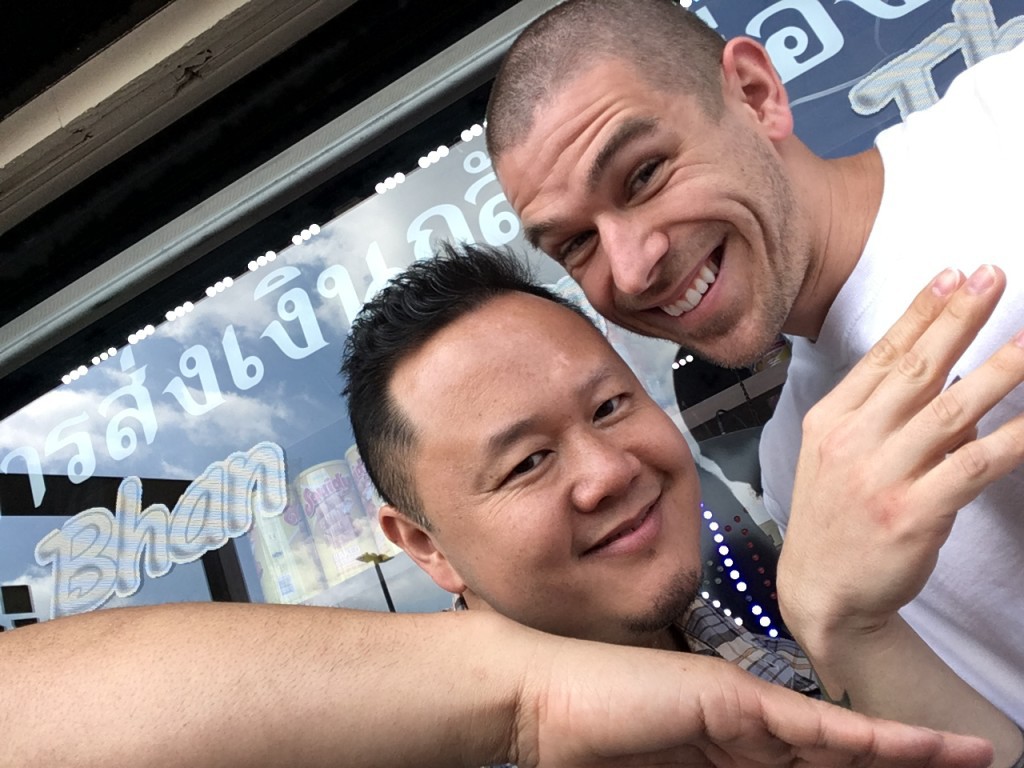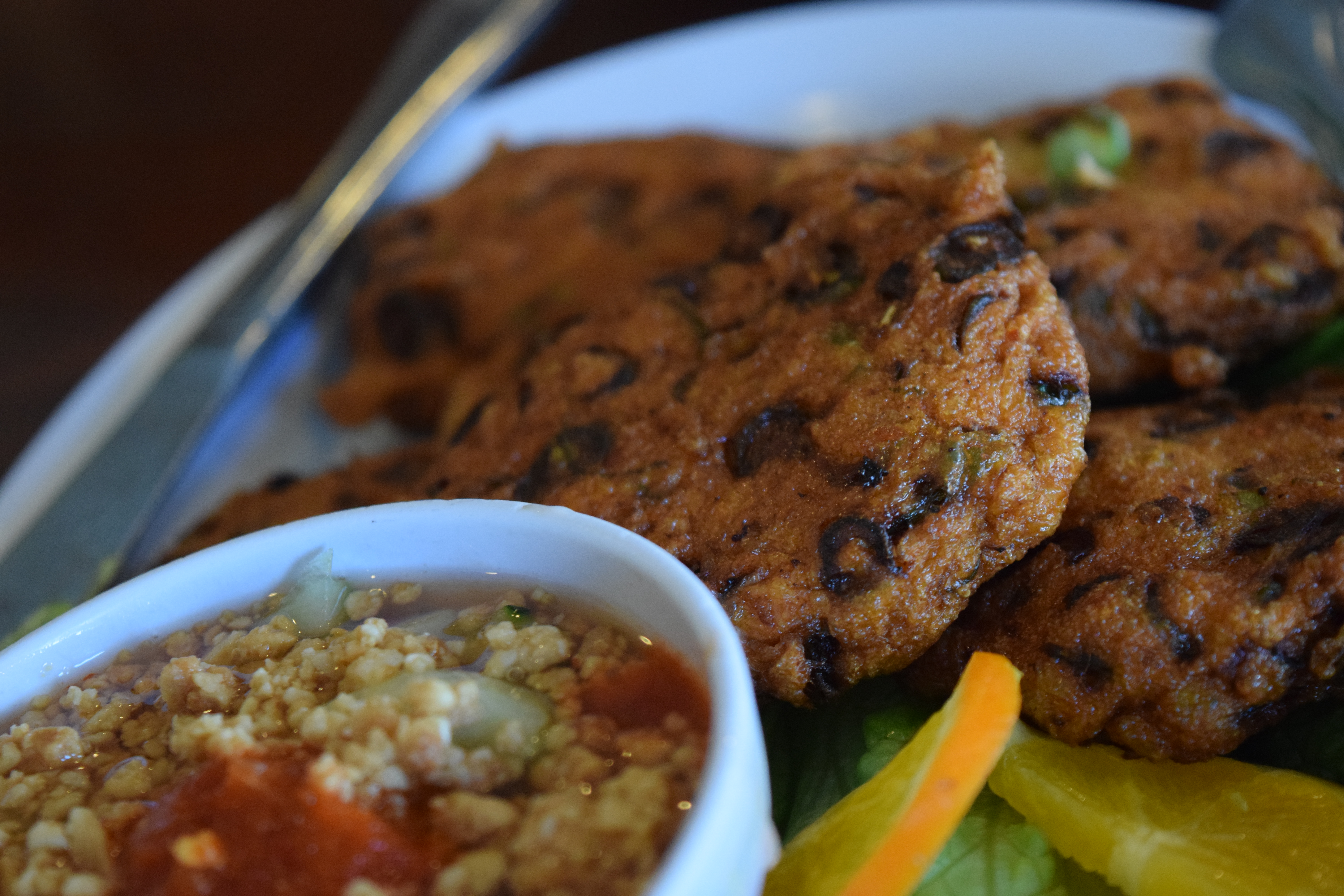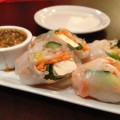Full Disclosure: we’re not Thai. Our 21&Me/Ancestry.com DNA tests and family trees show zero traces of any Asian heritage, but we do love their food! We love it so much, that we were willing to shell out top dollar to go on a “secret” food-tour of LA’s (Hollywood’s) Thai Town led by one of the world’s leading ambassadors for Thai cuisine, Jet Tila.
If you watch Food Network, you know who Jet is. If you love cooking Asian food at home, you might be aware that he had one of the top-selling cookbooks of the year. (We have our signed copy of 101 Asian Dishes You Need to Cook Before You Die on our coffee table.) What you might not know about Jet is the fact that he is the United States’ Official Food Ambassador to Thailand, and a member of the Thai family that opened the first Thai restaurants in the US. So, Jet is legit.
Unfortunately, these food tours became scarcer as Jet’s schedule started filling up; filming with Food Network can be very time-consuming. Even more unfortunately, Jet’s astronomical rise in popularity caused these tours to get booked even faster. The bottom line is, we were lucky to score our spots. One final note: due to the nature of the food tour, filming was not okay, so we took notes and we’re going to do our best to reiterate them the way we understood them.
Thai Food Secrets!
1. You do not NEED to always use chopsticks! In fact, you’re doing yourself a cultural wrong if you put your chin high in the air, and say, excuse me, would you please give me some chopsticks because I know how to use them. Chopsticks, in Thai cuisine, and many other Asian countries, are used far more in America, by Americans, than the actual people of that country. If you weren’t aware, the proper way to eat sushi is to use your hands. Now, there is one time you should be using chopsticks in a Thai restaurant and that is for NOODLE dishes. Now you know!
2. Pick up a FORK and SPOON! That’s right, the utensils of choice in Thai cuisine are a fork and spoon, with one in each hand. We were really intrigued by this and had no choice but to ask, how do we decide which one goes in which hand. There isn’t a HARD cultural right or wrong when it comes to this, based on the fact that they’re understanding of people being right and left-handed. Still, the safest way to maintain your etiquette is by using a fork in your left hand to move food onto your spoon in your right hand, and eat from the spoon. Kinda cool, right?
3. Eat with YOUR HANDS! Now, we’re not telling you to throw away your table manners entirely and act like a barbarian from some fantasy movie. But, when it comes to rice, the Thai excel in the realm of sticky rice. Apparently, if you’re going to eat at a Thai restaurant, you’re wasting your time if you get anything BUT sticky rice. (Just kidding, jasmine rice has its place on the table, too!) When it comes to eating certain dishes that remind you of finger-food, you should grab some sticky rice and use that to pick up the food. It’s hard to put this into words, but once you touch the sticky rice, your muscle memory of playing with playdoh as a kid will take over!
4. DO NOT MESS with the SPICE! This wasn’t anything from Jet’s mouth (we love him and we’re not trying to make him look bad), but my close friend who lived in Thailand and Bali for a long time told me this: if you ever go to Thailand, tell them you want “farang spicy.” That basically means white-people spicy, because their level of spice will leave you in a world of pain. While this is important to consider, just remember that Thai dishes revolve around an important flavor balance (that we’ll discuss next) and asking them to make something less spicy than it is intended to be, will basically make the dish taste much worse! If you’re scared of the spice, just get something that isn’t very spicy. Don’t request that a spicy dish is made without spice!
5. YUM! Yum is an actual concept and not just a word or expression. It refers to a balance of five flavors, which makes Thai food so damn delicious. These five flavors are: sour, sweet, salty, bitter and spicy. Going back to #4, if a family has made a sauce the same way for 1000 years, and you ask them to make it less spicy, you’re destroying that balance. Even their papaya salad is yum, aka… it is spicy! Their most important ingredients, that you probably have never heard of, have a lot to do with adding those flavors to all of their dishes.
6. What the heck is KAFFIR LIME LEAF? It’s a key Thai ingredient that you might not be able to find in your local big-box grocery store. Jet took us to Bangluck Market and used me as a coconut tree. Why? Because coconuts are an important part of Thai cuisine so it makes sense given the context. If you’re planning on making Pad Thai (or other classics) at home, you’re going to need a Thai pantry. At the very least, that pantry should include: Thai chilies, fish sauce, palm sugar, coconut milk, tamarind paste, lemongrass, Thai basil AND GALANGAL. Good luck finding that one in your local grocery.
Note: There are obviously other foods that haven’t been included in our Thai pantry: certain noodles, protein (shrimp), dried spices, etc. It’s not that we’re picking our favorites, but if you’re interested in delving deeper into Thai cuisine, you need to research the regions in Thailand. Southern, Central, Northeastern and Northern Thailand are all unique regions that have their signature spices and dishes. Since we’re not experts on the regions, we’ll leave it at that. Just know that the Sriracha in your fridge is named after a place in Thailand where the original version is quite different than yours. (It’s sweeter and more balanced.)
7. Every Thai restaurants makes ONE DISH WELL! Okay, okay, that’s an exaggeration…under-exaggeration? We’re sure they aren’t trying to serve mediocre food, but many Thai restaurants that have been around for decades have their signature dish. If you’re going to a top-tier Thai restaurant that has been around for 30 years and defaulting to pad thai or pineapple fried rice, you’re doing yourself a huge disservice. By finding out what region of Thailand the family is from, you’ll have a better idea what they love to make, and what to order. Do some research and even politely ask the staff. (Jet taught us about bowing and saying hello/thank you in Thai, but we don’t want to give you bad advice!) Trust us, it will be worth it!
If you’re in Hollywood/Thai Town (LA) and find yourself at the following restaurants, you NEED to order the following.
Ruen Pair – Papaya Salad [Oh, and the pork (or beef) Jerky]
Sapp Coffee Shop – Boat Noodles
Hollywood Thai – Tiger Cry
We’re hoping that these Thai food secrets, told from a non-Thai point of view, help you further discover one of the world’s greatest cuisines, and also leads you into other adventures! What country should we talk about next? Obviously, being adventurous and trying new things is an important way to stay hungry and fit!
Huge thanks to Jet Tila for taking our money, talking Star Wars and dealing with our low spice tolerance. He’s one cool dude and we totally recommend you buy his cookbook! Also, a major shout-out to Melting Pot Tours, for setting it all up. If you want to join them on his next tour (in Feb and April 2018, apparently), then click HERE!























my results did show , I think 4%, of that general area 🙂